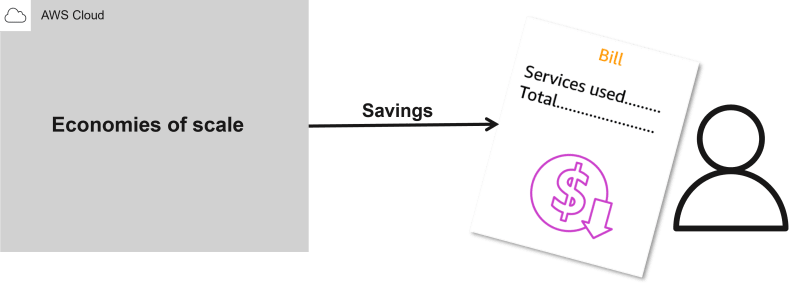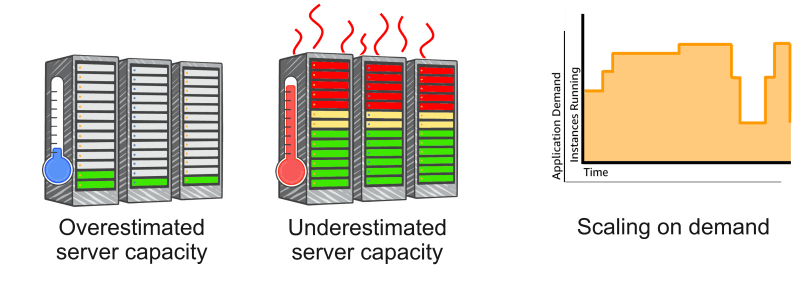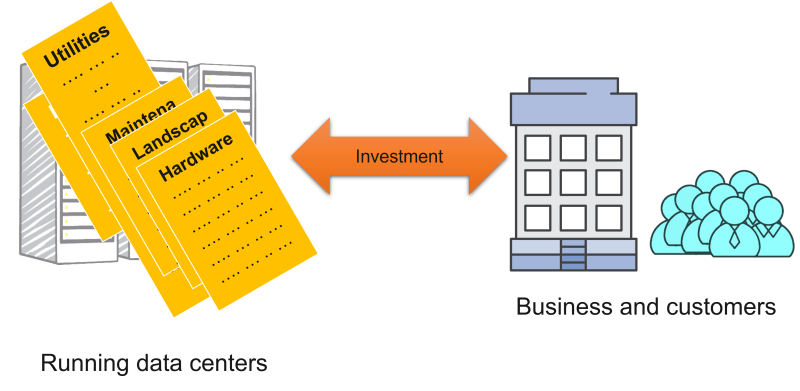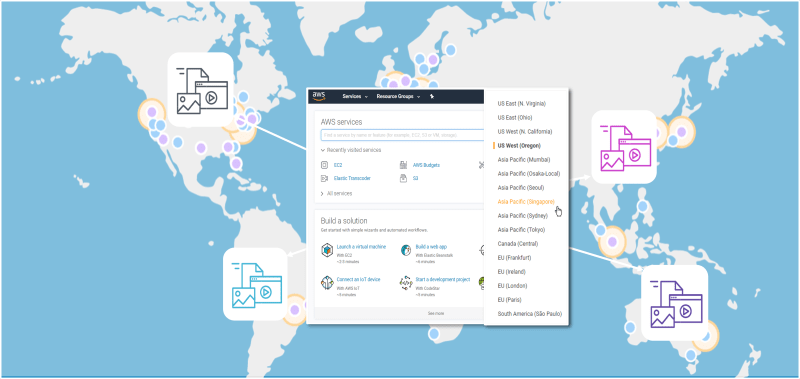Before we go the definition of AWS, let's define first what are web services?
In general, a web service is any piece of software that makes itself available over the internet or on private (intranet) networks. A web service uses a standardized format—such as Extensible Markup Language (XML) or JavaScript Object Notation (JSON)—for the request and the response of an application programming interface (API) interaction. It is not tied to any one operating system or programming language. It’s self-describing via an interface definition file and it is discoverable.

What is Amazon Web Services (AWS)?
- Amazon Web Services (AWS) is a secure cloud platform that offers a broad set of global cloud-based products.
- AWS provides you with on-demand access to compute, storage, network, databases, analytics, networking, mobile, developer tools, management tools, IoT, security, and enterprise applications.
- AWS offers flexibility. Your AWS environment can be reconfigured and updated on demand, scaled up or down automatically to meet usage patterns and optimize spending, or shut down temporarily or permanently.

- You pay only for the individual services you need, for as long as you use them. The billing for AWS services becomes an operational expense instead of a capital expense. Later on this article, I will discuss the difference between the operational expense and capital expense.
- AWS services are designed to work together to support virtually any type of application or workload. Think of these services like building blocks, which you can assemble quickly to build sophisticated, scalable solutions, and then adjust them as your needs change.
Advantages of cloud computing in AWS
Why are so many companies interested in moving to the cloud? This section presents six advantages of cloud computing.
-
Trade capital expense for variable expense - Capital expenses (capex) are funds that a company uses to acquire, upgrade, and maintain physical assets such as property, industrial buildings, or equipment. Do you remember the data center example in the traditional computing model where you needed to rack and stack the hardware, and then manage it all? You must pay for everything in the data center whether you use it or not.
 By contrast, a variable expense is an expense that the person who bears the cost can easily alter or avoid. Instead of investing heavily in data centers and servers before you know how you will use them, you can pay only when you consume resources and pay only for the amount you consume. Thus, you save money on technology. It also enables you to adapt to new applications with as much space as you need in minutes, instead of weeks or days. Maintenance is reduced, so you can spend focus more on the core goals of your business.
By contrast, a variable expense is an expense that the person who bears the cost can easily alter or avoid. Instead of investing heavily in data centers and servers before you know how you will use them, you can pay only when you consume resources and pay only for the amount you consume. Thus, you save money on technology. It also enables you to adapt to new applications with as much space as you need in minutes, instead of weeks or days. Maintenance is reduced, so you can spend focus more on the core goals of your business. -
Benefit from massive economies of scale - By using cloud computing, you can achieve a lower variable cost than you can get on your own. Because usage from hundreds of thousands of customers is aggregated in the cloud, providers such as AWS can achieve higher economies of scale, which translates into lower pay-as-you-go prices.

-
Stop guessing capacity - Eliminate guessing about your infrastructure capacity needs. When you make a capacity decision before you deploy an application, you often either have expensive idle resources or deal with limited capacity. With cloud computing, these problems go away. You can access as much or as little as you need, and scale up and down as required with only a few minutes’ notice.

-
Increase speed and agility - In a cloud computing environment, new IT resources are only a click away, which means that you reduce the time it takes to make those resources available to your developers from weeks to just minutes. The result is a dramatic increase in agility for the organization because the cost and time that it takes to experiment and develop are significantly lower.

-
Stop spending money on running and maintaining data centers - Focus on projects that differentiate your business instead of focusing on the infrastructure. Cloud computing enables you to focus on your own customers instead of the heavy lifting of racking, stacking, and powering servers.

-
Go global in minutes - You can deploy your application in multiple AWS Regions around the world with just a few clicks. As a result, you can provide a lower latency and better experience for your customers simply and at minimal cost.

AWS Documentation
AWS provides extensive and detailed documentation for each AWS service. Guides and application programming interface (API) references are organized by service category.
AWS also offers general resources and tutorials that can be accessed from the AWS Documentation pages.
AWS technical papers and guides can be filtered by product, category, or industry, so you can find the information that's most relevant to your needs.
Learn more about AWS Documentation


Top comments (0)